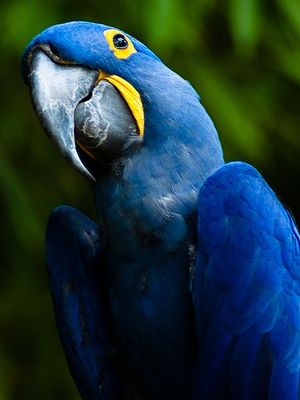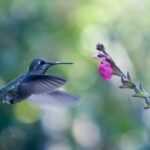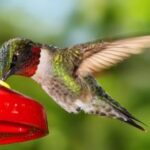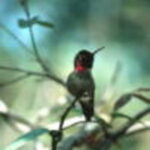The skies of South and Central America used to be like a rainbow of feathers as glorious flocks of Macaws would take to the sky. The sight was stunning and life changing. But, sadly, those days are gone forever. Now the Macaw is almost extinct, some are already gone forever.
Macaws are now endangered and facing imminent extinction in the wild if something is not done quickly. Some of the species of Macaw are already gone completely. Their habitat is being destroyed by loggers, ranchers, and the encroachment of civilization. They are hunted ruthlessly by locals for their meat and feathers. They are also captured for the illegal pet trade. This normally ends in disaster because the birds inevitably die in route before they ever reach their pet trade destination. At this point in time it is believed that there remains only 3000 of the huge glorious blue Hyacinths Macaws in the wild. Sadly, the situation is even more dire for the Red Fronted Macaw and the Blue and Gold Macaw. Estimates are that there exists less then a 1000 of these birds in the wild.
Scientists recently released heartbreaking news concerning the Sphinx Macaw. They believe that there is only one Sphinx remaining in the wild. They are unable to find any others despite their best efforts. They believe that the Glaucus Macaw is now completely extinct in the wild. They have been unable to locate any existing despite their best efforts of searching.
Tourists seem to aid in the demise of the Macaw by purchasing local crafts from the natives of the area. These crafts are inevitably made utilizing Macaw feathers but the unsuspecting tourist does not realize that the bird was killed in order to get its colorful plumage. The area is a mostly impoverished region where the indigenous locals do what they can to survive. Lately, they have been able to make a living feeding the tourist trade with colorful trinkets made from feathers. Unfortunately, this is costing the lives of a multitude of wild Parrot and Macaw species.
Local ranchers also kill large numbers of Macaws every year because they believe their loud voices spook their cattle and they damage the palm tree’s that the ranchers utilize for fence posts.
The Macaw is a glorious intelligent bird that comes in all sizes and colors. They are considered the worlds largest parrot and they come in 17 various species. Many scientists feel that the Macaw has the intelligence of a five year old child. They are quite affectionate and have been taught to even communicate on various levels by experts.
Their home range is from Central to South America in the heart of the rain forest and the dry lands. They mostly congregate near rivers and large bodies of water. They tend to need the muddy grounds that are produced by the water in order to feed their hunger for minerals.
These amazing birds mate for life and their lifespan will normally top sixty years. Unfortunately, they are not proliferate breeders. Some years they will have no young and others years only one or two will be hatched. They seem to only reproduce when conditions are ideal and they are not driven by a need to procreate like so many other animal species. This makes breeding them in captivity often hard because they will mate but not breed. They seem to only have young when they want too. And its often hard to know exactly how to recreate what the Macaw feels are the ideal conditions for breeding. This makes captive breeding programs often difficult and frustrating, especially with a few of the species who are even more picky then others.
Unless we understand their wild biology,” says macaw expert Charles Munn, who is featured in NATURE’s The Real Macaw “we may not be able to avoid the extinction of species after species of these spectacular New World parrots.
All macaws are now listed on CITES Appendix I. There are two species that fall under CITES Appendix II which means they can still be legally traded in the pet trade. But this is not helping to curb the illegal pet trade. Each country must take steps to cease the illegal important of Macaws into its border. The private citizen needs to make sure that they know exactly where the bird they are buying comes from. They need to make sure it was domestically bred and raised so they do not inadvertently feed the illegal pet trade.
Somehow there must be a prohibition instigated on the locals to prevent feather crafts that contain Macaw feathers. This will probably never be implemented in such poverty stricken countries so instead tourists must be educated to know that the trinkets they purchase are costing lives that can never be replaced. If the tourists stop buying the items then eventually the local Indian population will cease to make them. Which ultimately means the killing will stop. But the questions will remain, can this be done in time?
Ranchers also need to be educated since most of them tend to be illiterate and do not understand the ramifications on the wold they are causing by killing a species to extinction because it is noisy or chooses to pick at palm tree’s they wish to utilize as fence posts.
In the end the only true hope that remains is captive breeding programs which must be encouraged and financed around the world. This is truly the only hope that remains for many species.
Sources:
http://www.bagheera.com/inthewild/van_anim_macaw.htm
http://www.physorg.com/news80925215.html
http://news.softpedia.com/news/Macaws-Are-Facing-Extinction-39281.shtml
http://data.iucn.org/dbtw-wpd/html/Red%20List%202004/completed/Section3.html







